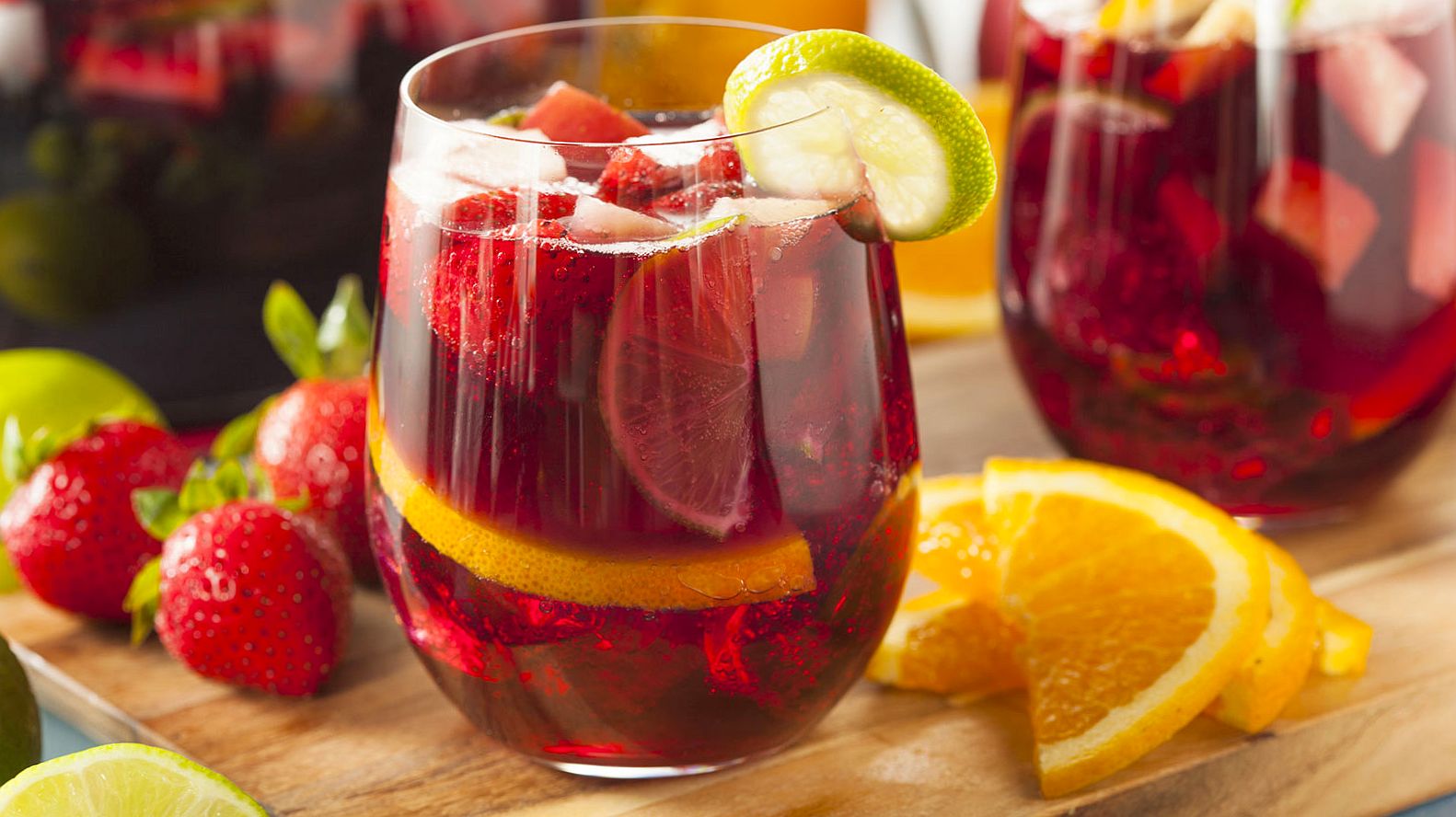Is it time for the beloved gin and tonic to take one step back? Here’s our argument for why sangria might just be the ideal boozy libation for Malaysia’s climate… and how to make yours at home!
In a hot and humid climate, the classic gin and tonic really is a fantastic refresher. Cold, crisp, and with the right balance of alcohol, sweetness, and bitterness – assuming it’s made properly – this basic cocktail and all its creative iterations seldom fail to hit the spot on any given day of toasty weather here in the tropics.
But even though the G&T works on many levels here, it’s not necessarily perfect. Malaysia’s oppressive weather can flatten even the bubbliest of tonics in short order, and when compounded by the rapid melting of the ice involved, slow drinkers will be left with a flat, watered-down cocktail before they get halfway through it.
Still, while we would never suggest removing the venerable G&T from your day-drinking list, why not expand it with the humble, centuries-old favourite… sangria! This wine-based punch has delighted countless millions over the years and written evidence of our long-running love affair with this delicious thirst-quencher has been found as far back as 200 BCE!
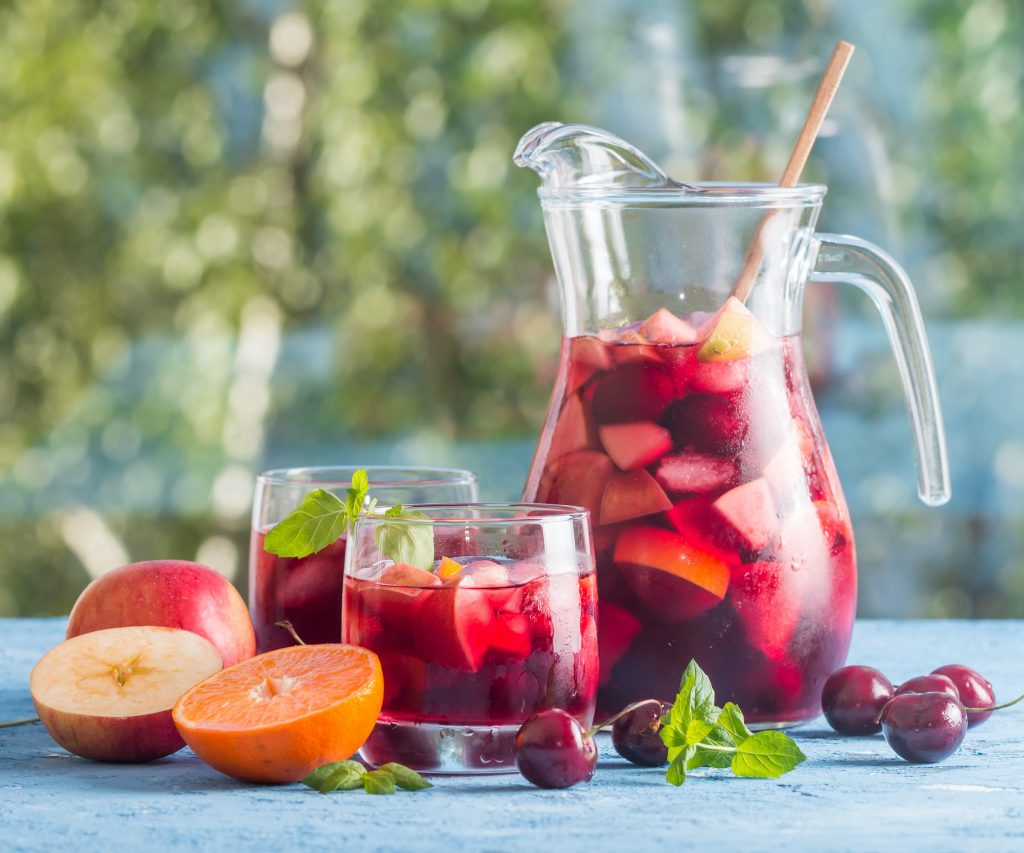
According to food and drink writer Nancy Koziol, sangria is much more than just wine and fruit, and its flexibility and forgiving versatility makes it the perfect pitcher drink for dinner parties, impromptu get-togethers, or just to have on hand in the fridge.
The quintessential sangria comprises a mix of wine, spirits, sweetener, juice, and fruit, and mixologists (both the professional and home versions) love it because it allows for limitless creativity.
Let’s break it down.
WINE
All sangria starts with a bottle of wine. However, the notion that sangria can magically turn an unremarkable (or even rubbishy) bottle of wine into something special is false. Start with a wine you’d be happy to drink on its own, not something that’s gone off or that’s been sitting forgotten for a month in the fridge after opening for a glass or two.
Ideally, the wine should be low in tannins and high in acidity. It doesn’t have to be crazy expensive, either. Here in Malaysia, you can easily find the bottles you want in the RM50 to RM80 range.
Red Wine: Garnacha (what Grenache is called in Spain) is a favourite for red sangria. As Koziol wrote in her report on sangria, Stephen “Pip” Roffi, the mixologist at Village Garage Distillery in Bennington, Vermont, has developed a red sangria recipe that relies on a quality, specific wine. “I usually use a Grenache or a Malbec,” Roffi said. For Malbec, he’s specific: “Definitely a Malbec from Argentina or Chile.”
Nearby, at a nanobrewery called Harvest Brewing, Sean Dunleavy makes his well-regarded sangria with a Pinot Noir/Cabernet blend. The low-tannin, high-acid Pinot Noir balances the bold, tannic Cabernet.
White Wine: Give the basic requirements for a sangria-friendly wine, white wine is the perfect base, with no discernible tannins and refreshing acidity. Plenty of mixologists like to use Sauvignon Blanc. Some have also turned to Grüner Veltliner, a crisp Austrian white wine known for its distinctive pear flavour profile.
You can also be daring and use a good rosé as your base wine. With the fortification provided by a berry-flavoured vodka, this is a superb choice for a hot day!
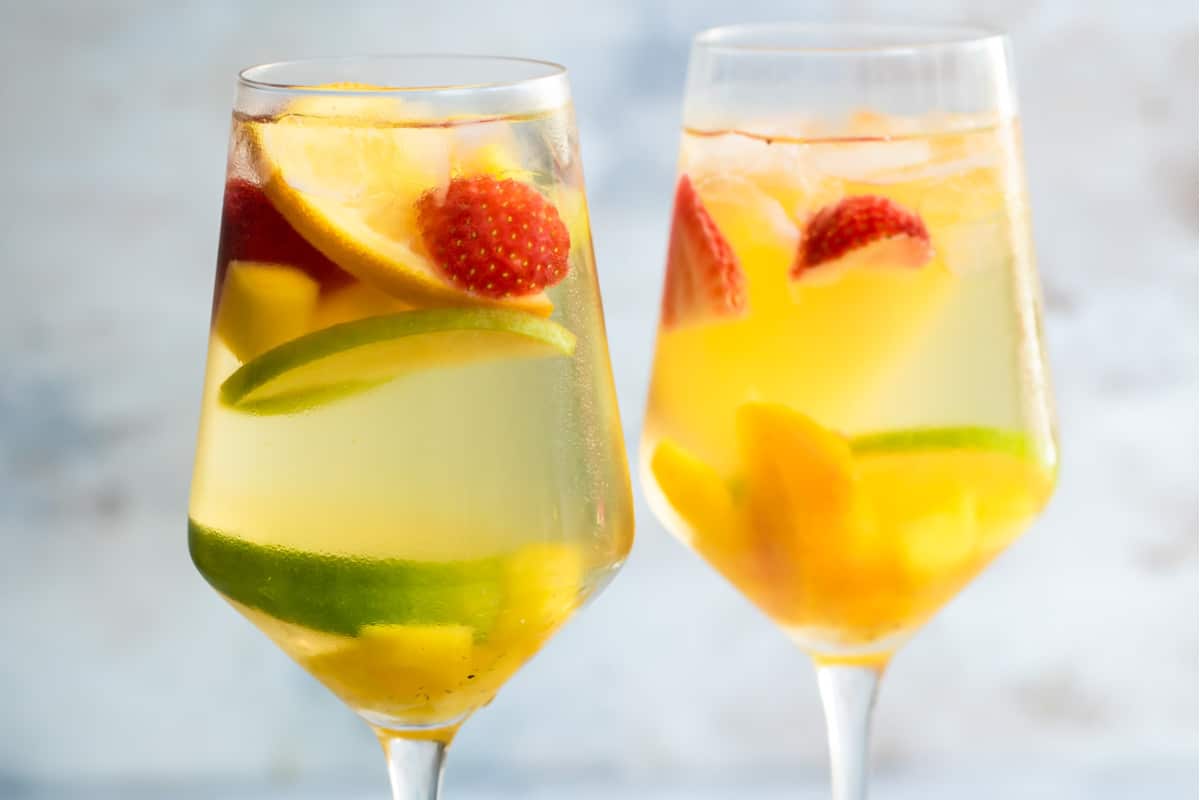
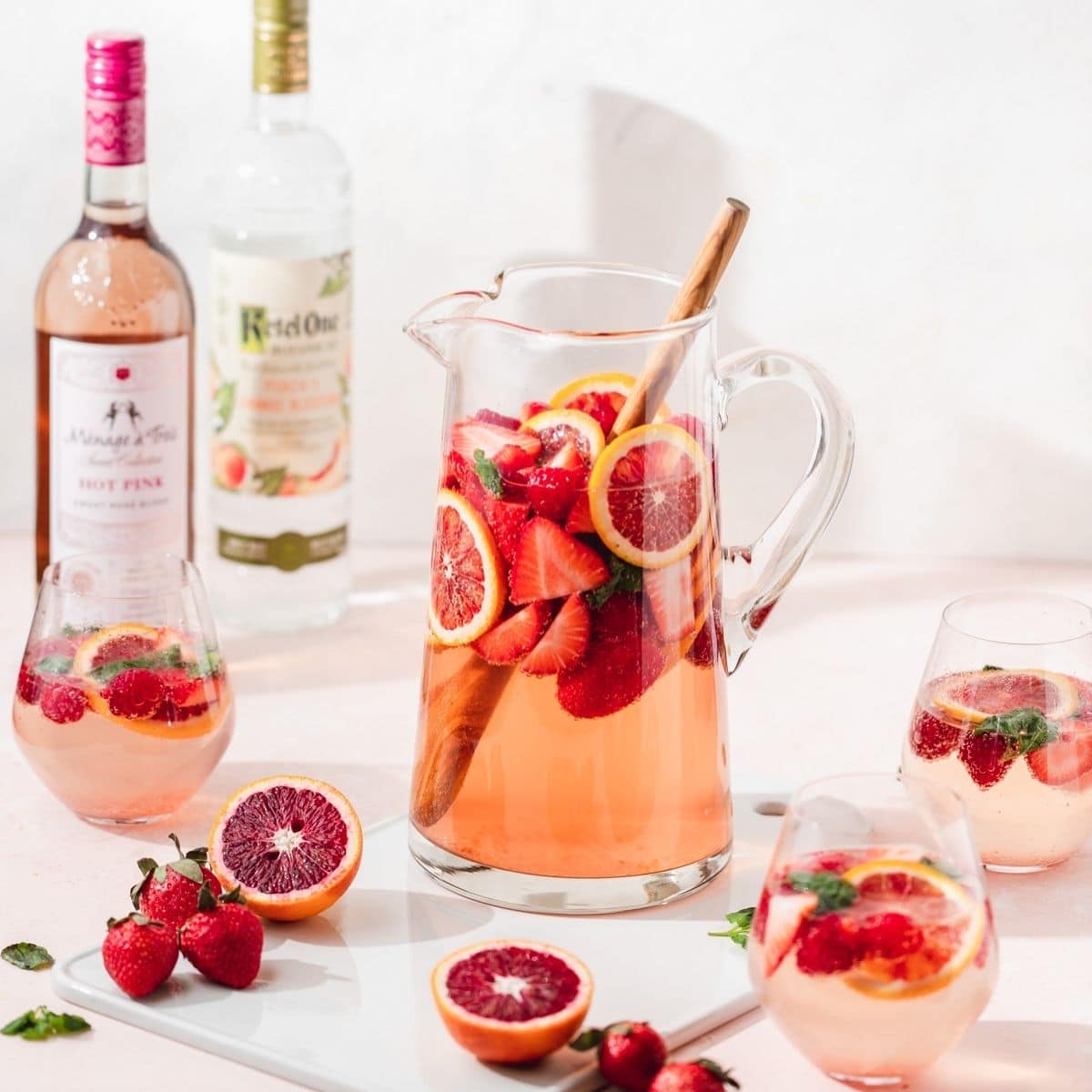
SPIRITS
The addition of a generous splash of distilled spirits provides structure while balancing the sweetness in sangria. Raising the overall alcohol level also makes sangria last longer so you don’t have to finish the pitcher.
Traditional sangria uses brandy (a neutral grape spirit), but these days, mixologists are turning to all sorts of alternatives, like vodka (flavoured vodka is a good option here), lighter-profile whiskies such as some Irish or Canadian offerings, higher-proof liqueurs such as Cointreau, and even some ‘out there’ choices like agricole or cachaça. Both of these are spirits made from fermented and distilled sugarcane juice, and some agricoles in particular can have a remarkably distinctive, even grassy, vegetal profile and would be a fun spirit to play with in a white sangria to boost the complexity.
The addition of aromatic bitters is another way to weave contrasting and complementary flavours into your sangria. And though it’s a good starting point, don’t just think you have to stick only to the tried-and-true Angostura bitters. You can add a bitter apéritif like Campari, though a little goes a long way. Try orange or peach bitters for a good alternative, or make your own bitters using some distinctive local spices like cardamom, star anise, or cinnamon. (Though be forewarned, making bitters takes a long time.)
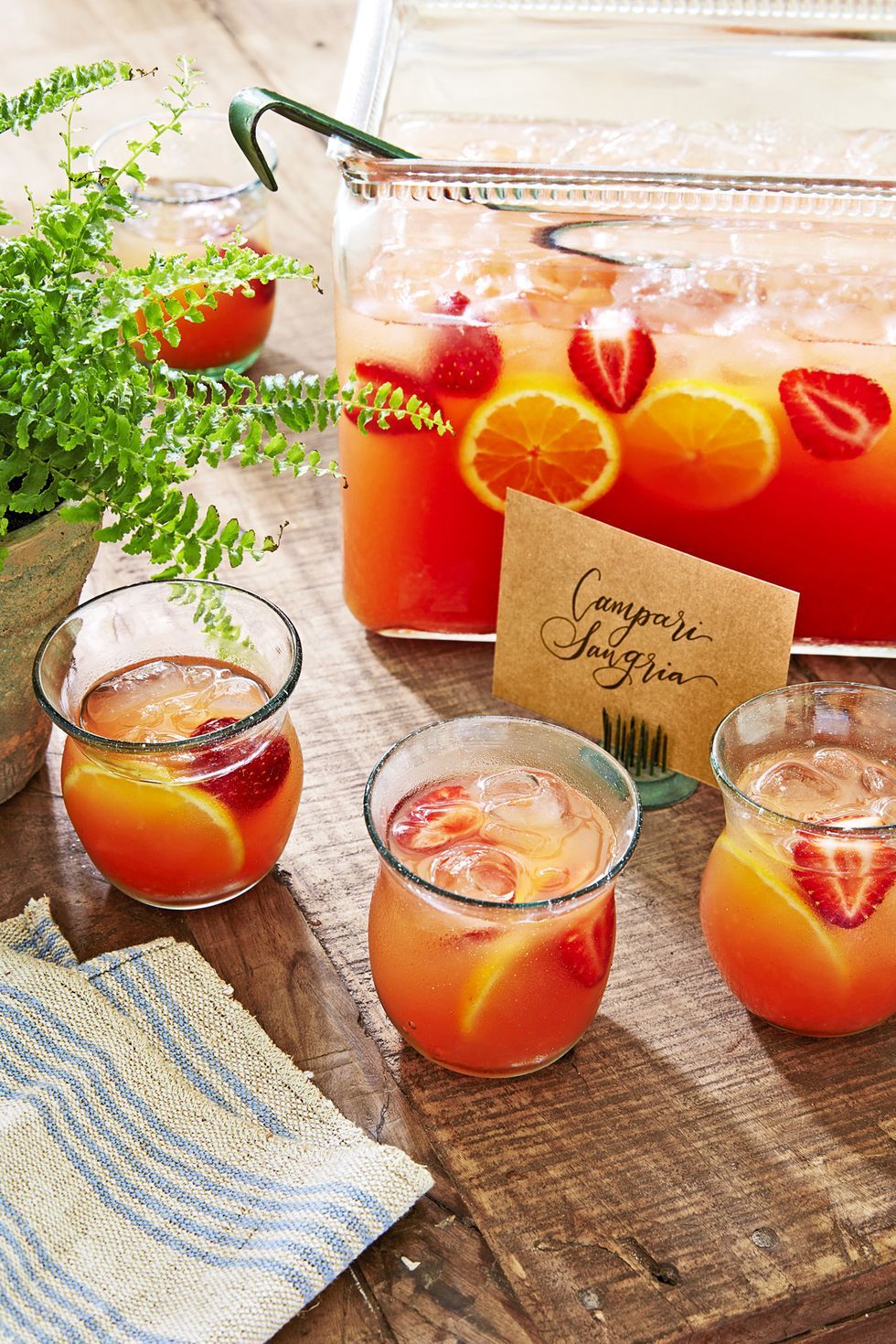
JUICE
For red sangria, orange juice (no pulp, please) is the most popular juice to add, but you can augment it with a dash of cranberry, pomegranate, or grapefruit juice, too. Some mixologists use peach tea, others use green tea with a bit of lime. This is what we mean when we say sangria is forgiving and flexible, so feel free to get in touch with your creative bartending side.
Be sure to use real juice, by the way, not “orange drink” or some other faux alternative. They’re not interchangeable, and your sangria will suffer for the substitution.

SWEETENER
The tried-and-true simple syrup (made by boiling equal parts of sugar and water) is never going to be the wrong decision here – and you can adjust the sweetness to taste – but this is another area where you can jazz up your pitcher of pleasure! Try some agave nectar or honey in place of some of the simple syrup. Or you can make a fruit syrup by boiling two parts of the juice of your choice with one part sugar until the sugar is dissolved and the liquid begins to thicken a little.
Since it’s Malaysia, there are loads of syrups on the market, too, so look at what’s on offer and think outside the box. Strawberry? Peach? Soursop? Blackcurrant? A couple of spoonfuls could really amp up your sangria with ease.
Be sure to consider the balance if you’re using sweetener, liqueurs, and/or sweetened fruit juice in the mix. Add a little at a time and don’t go overboard or your sangria will be much too sweet. The star of the sangria is still the wine, after all. Everything else is meant to accentuate it, not bury it. Aim for a balance between bold alcohol, crisp acidity, and fruity sweetness.
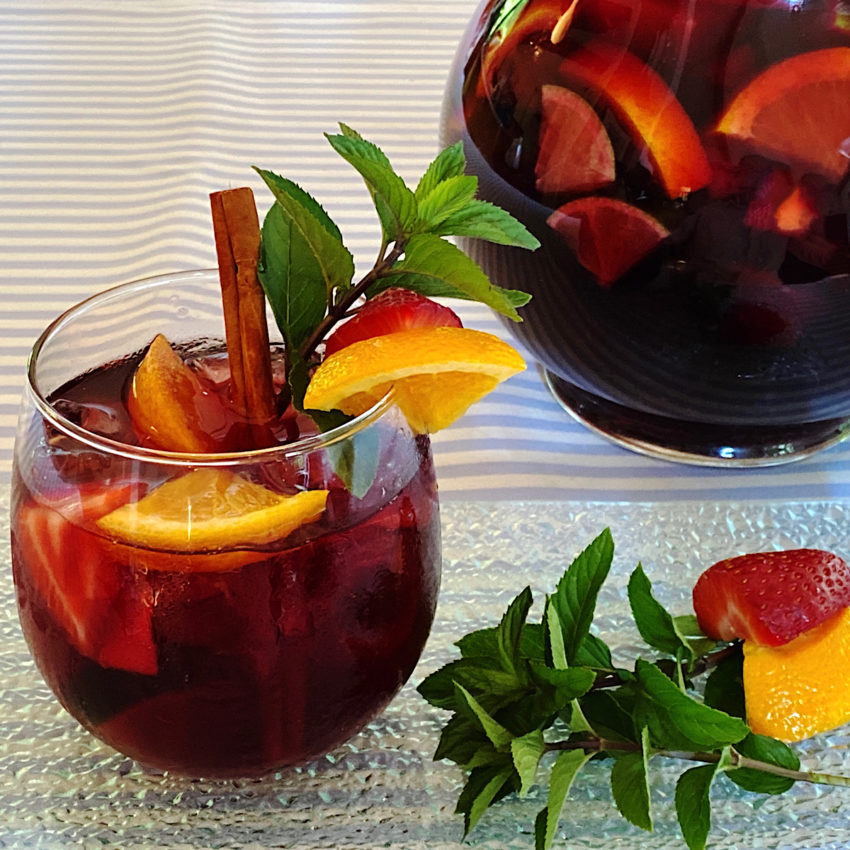
FRUIT AND GARNISH
Slices or chunks, it doesn’t matter. Fresh cut fruit adds an unmistakable visual appeal to sangria, and some extra flavour, as well. And of course, you can nibble on it when your drink is finished, too! Try oranges, apples, ruby grapefruit, seedless grapes, lemons, and limes for starters. Try to pair the “right” fruits with the flavour profile of the sangria. The biggest difference will be whether it’s red or white. Fruits like green apples, melons, and pears work nicely with white, while red sangria sings with berries, grapes, red apples, and oranges. However, there are no set rules, so use what you have on hand and feel free to mix it up.
Don’t be afraid to embrace some of the more local fruit choices either, such as lychee, mango, or rambutan. A few smashed stalks of lemongrass, though not edible, will surely be a nice touch. We’d steer clear of things like jackfruit and durian, as they may overpower the drink completely, but feel free to experiment if you can’t resist!
For garnish and extra flavour, things like fresh mint, cinnamon sticks, rosemary, or star anise can be used.

THE BASIC FORMULA
Here’s a highly customisable base formula for your homemade sangria, which serves as a good place to start. From this basic recipe, you can — and should — add some flairs of creativity and imagination.
- Wine: 1 bottle (try a Malbec or Sauvignon Blanc for starters)
- Bitters: to taste (start with a few dashes up to a tablespoon)
- Liqueurs: 1/4 to 1/2 cup
- Spirits: 1/4 to 1/2 cup
- Juice: 1/2 to 1 cup
- Sweetener: 1/8 to 1/4 cup
- Cut Fruit: 1 to 2 cups
And that’s it! Just remember to taste throughout to ensure the balance of flavours is just where you want it. If you find you get a little more serious about making sangria and end up with a spot-on recipe, you’ll want to write things down. Then, on the next hot afternoon – which, let’s face it, is most of them – you can whip up a perfect pitcher of an ideal summer drink… the supremely satisfying sangria!
"ExpatGo welcomes and encourages comments, input, and divergent opinions. However, we kindly request that you use suitable language in your comments, and refrain from any sort of personal attack, hate speech, or disparaging rhetoric. Comments not in line with this are subject to removal from the site. "


